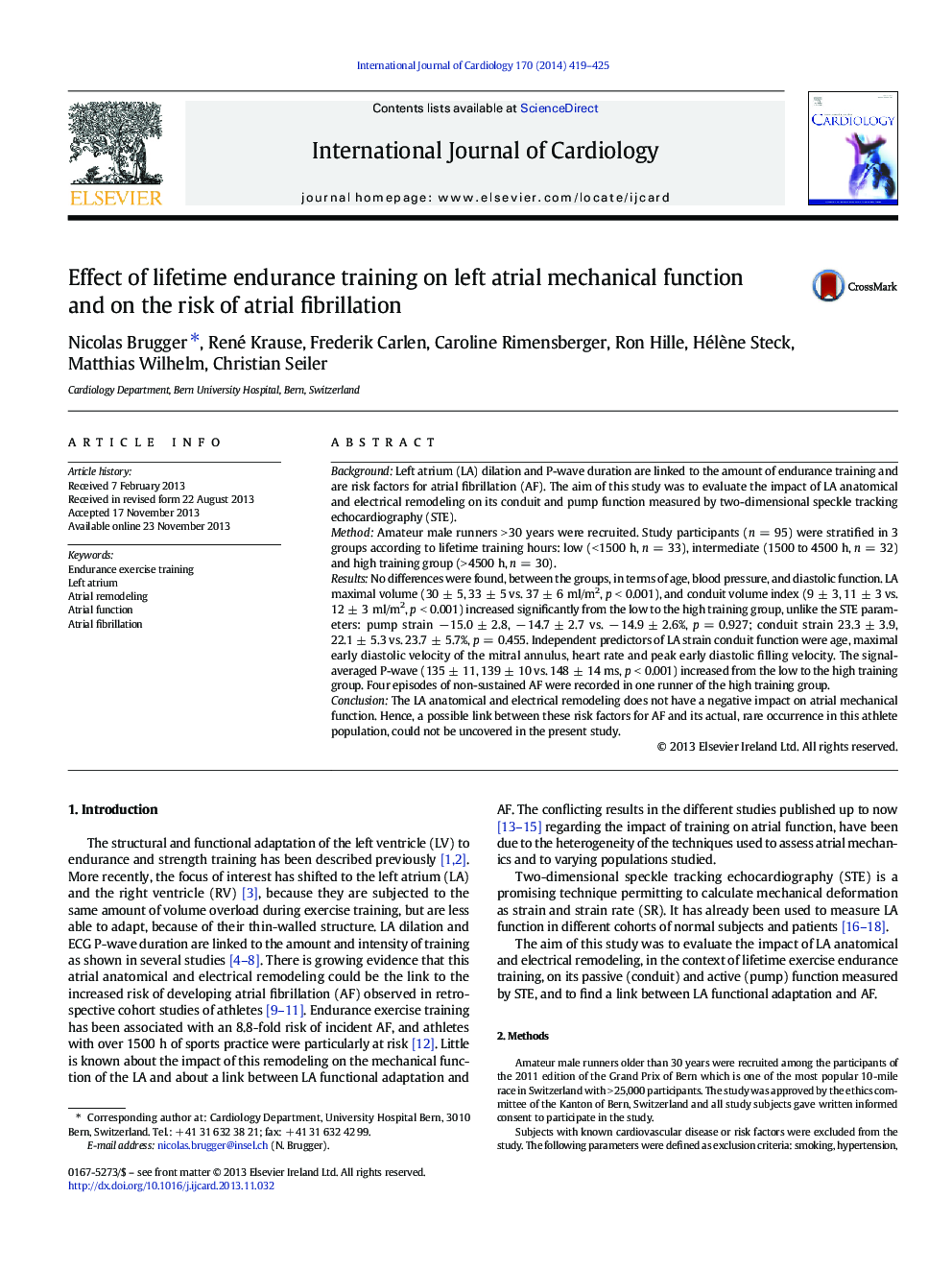| Article ID | Journal | Published Year | Pages | File Type |
|---|---|---|---|---|
| 5973053 | International Journal of Cardiology | 2014 | 7 Pages |
BackgroundLeft atrium (LA) dilation and P-wave duration are linked to the amount of endurance training and are risk factors for atrial fibrillation (AF). The aim of this study was to evaluate the impact of LA anatomical and electrical remodeling on its conduit and pump function measured by two-dimensional speckle tracking echocardiography (STE).MethodAmateur male runners > 30 years were recruited. Study participants (n = 95) were stratified in 3 groups according to lifetime training hours: low (< 1500 h, n = 33), intermediate (1500 to 4500 h, n = 32) and high training group (> 4500 h, n = 30).ResultsNo differences were found, between the groups, in terms of age, blood pressure, and diastolic function. LA maximal volume (30 ± 5, 33 ± 5 vs. 37 ± 6 ml/m2, p < 0.001), and conduit volume index (9 ± 3, 11 ± 3 vs. 12 ± 3 ml/m2, p < 0.001) increased significantly from the low to the high training group, unlike the STE parameters: pump strain â 15.0 ± 2.8, â 14.7 ± 2.7 vs. â 14.9 ± 2.6%, p = 0.927; conduit strain 23.3 ± 3.9, 22.1 ± 5.3 vs. 23.7 ± 5.7%, p = 0.455. Independent predictors of LA strain conduit function were age, maximal early diastolic velocity of the mitral annulus, heart rate and peak early diastolic filling velocity. The signal-averaged P-wave (135 ± 11, 139 ± 10 vs. 148 ± 14 ms, p < 0.001) increased from the low to the high training group. Four episodes of non-sustained AF were recorded in one runner of the high training group.ConclusionThe LA anatomical and electrical remodeling does not have a negative impact on atrial mechanical function. Hence, a possible link between these risk factors for AF and its actual, rare occurrence in this athlete population, could not be uncovered in the present study.
